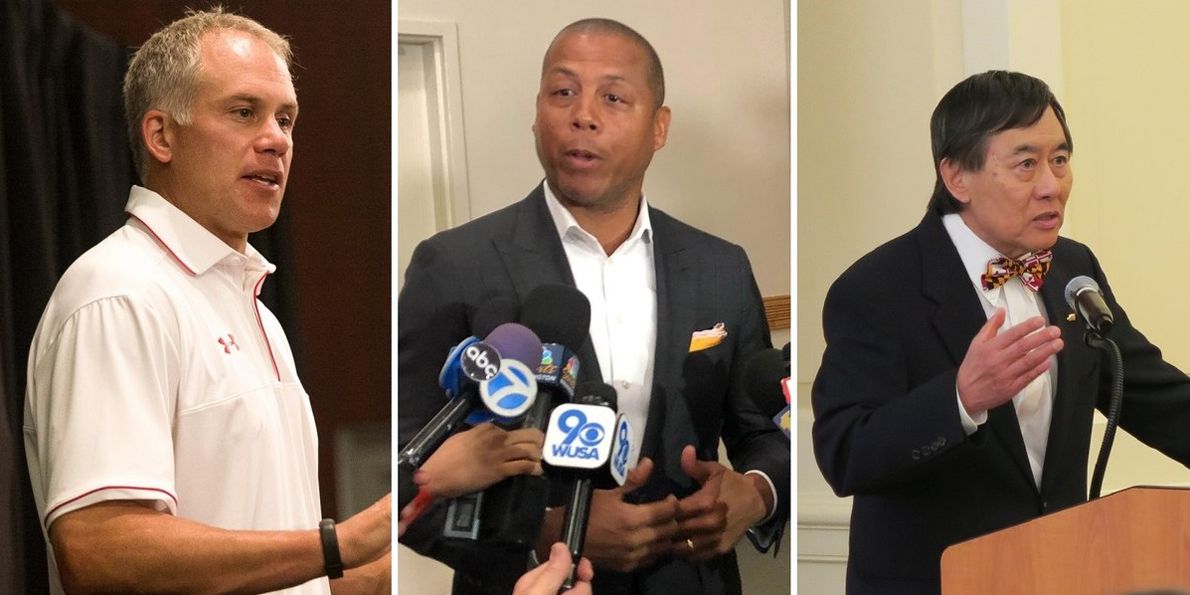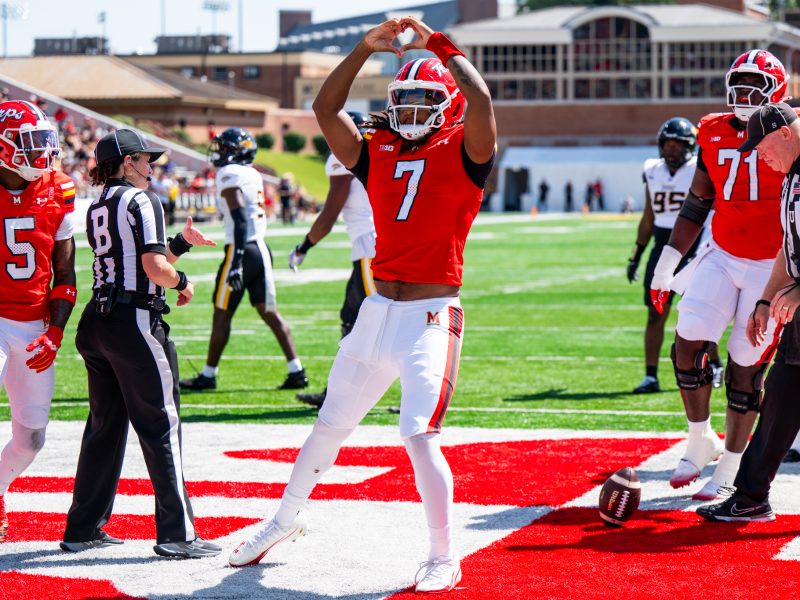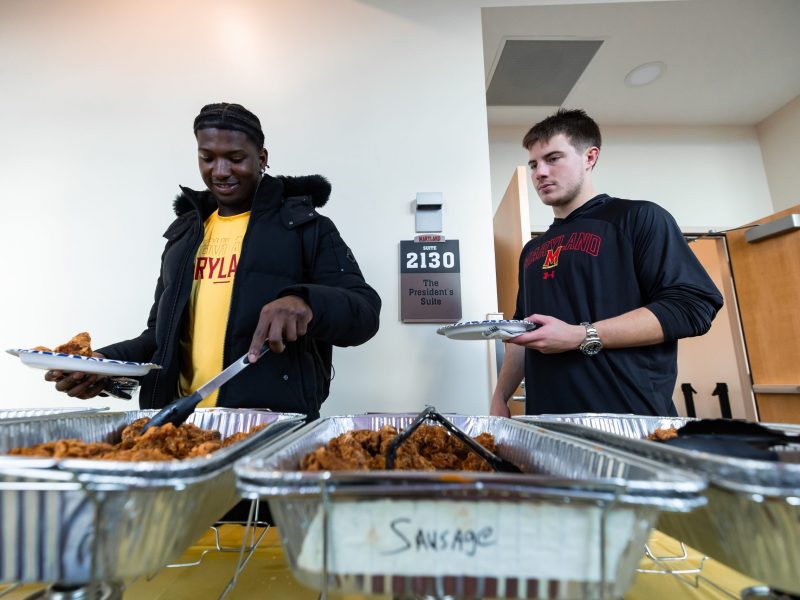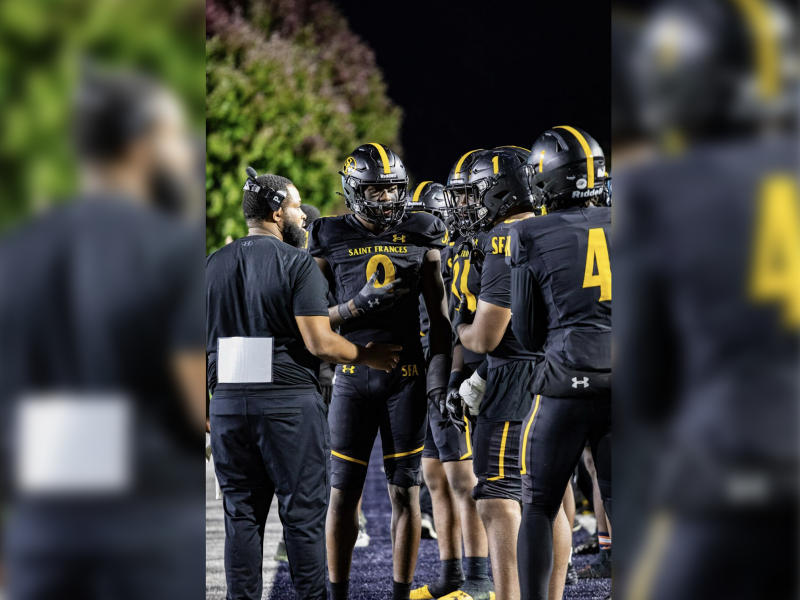James Crabtree-Hannigan is The Diamondback’s football columnist. He can be reached at jcrabtreehdbk@gmail.com.
On July 27, sports medicine consultant Rod Walters called University of Maryland senior administration and told them that school trainers had failed spectacularly when Jordan McNair suffered heatstroke at a team workout May 29.
The trainers hadn’t taken McNair’s vital signs. They didn’t recognize his symptoms. They didn’t treat him with cold water immersion. They didn’t send anybody to meet the ambulance. They weren’t prepared with proper equipment.
Head coach DJ Durkin had heard enough. He told athletic director Damon Evans to clean house in the training staff — and fast. Fall camp was set to begin the next week, and Durkin didn’t want his team to begin practice under the same trainers whose malpractice led to a player’s death.
That exchange between Durkin and Evans shows that, despite what they may tell investigators or the public, Durkin, Evans and university president Wallace Loh are not naive to the realities of the Maryland football culture, McNair’s death and Durkin’s role as head coach.
Durkin told the commission investigating the Maryland football culture that he had no responsibility to oversee strength and conditioning coach Rick Court, even though Court’s contract said he was to report directly to Durkin. Yet Durkin — likely rightfully — felt he had the authority to push for changes within the training staff, a group he wasn’t supposed to have any control over according to the organizational chart.
To be clear, Durkin doesn’t deserve criticism for that attempted interference. Remarkably, while his plea to Evans came two months after McNair suffered heatstroke, it still displayed far more urgency and concern in the wake of McNair’s death than anything else the university has done.
But it also proves that Durkin understood his power as head coach, as do the many other initiatives he took that perhaps aren’t directly listed in his job description: He changed the team’s dietary program and pain medication policies. He requested a physician be at every practice and that a psychologist be assigned to his team. He attempted to overhaul the school’s marijuana testing from punitive to therapeutic.
Still, Durkin somehow wants us and the Board of Regents to believe he was completely helpless to prevent or stop Court — who was so close with Durkin that players and coaches felt they were “the same person” — from abusing players.
Durkin’s forays into sports medicine and strength and conditioning also negate Loh and Evans’ careful attempts at separating the coaching staff from the training staff. At the Aug. 14 press conference where they accepted “legal and moral” responsibility for McNair’s death, they singled out the trainers and made sure to specify that coaches had not been found of wrongdoing.
Last month, after vigorously defending the school’s sports medicine model against claims that it doesn’t grant trainers enough autonomy from coaches, a reporter asked Loh how he can be sure coaches don’t influence medical decisions. His answer was absurd at the time and is even more laughable after the culture investigation revealed Durkin called for changes in the training staff.
“For a very simple reason: that they are not allowed to do it,” Loh said. “Can a coach, you know, try to persuade? I suppose so. But that coach would be out of line.”
While statements like that, along with many other actions over the past five months, might make it hard to believe, Loh, Evans and Durkin are not stupid.
Durkin knew the power he held, and he exercised it frequently. He could have exercised it over Court, too. And Evans and Loh know that trainers are not somehow insulated from the rest of the program they work within; the university declined to make any personnel decisions regarding trainers until after the culture investigation ended, despite Walters’ sports medicine investigation having wrapped up in September.
So when Durkin says Court was outside of his control, or when Evans and Loh say trainers are outside of any coach’s control, remember the age-old adage: Actions speak louder than words.



